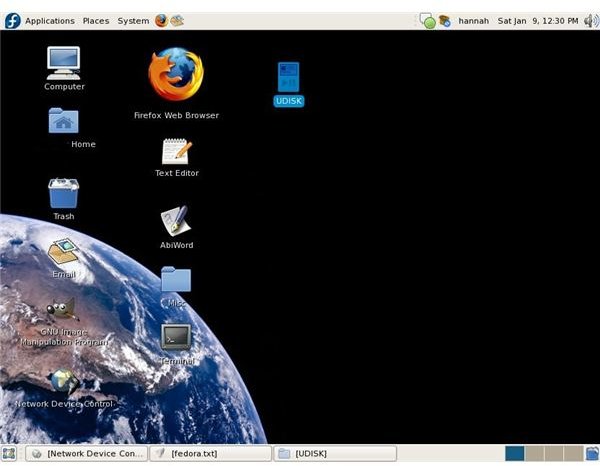A Berry Linux Comparison
I always find it interesting to take a look at the Linux distributions that are “spin-offs” from Fedora, a flavor of this open source operating system that has been among my favorites for years now. This Berry Linux comparison with Fedora in a Berry Linux vs. Fedora format, makes mention only of some of the most commonly used applications. The first thing I’ll say is that, as a Fedora user, I wouldn’t say that Berry reminds of Fedora, particularly if you prefer the GNOME or any other desktop environment over that of the K desktop.
Berry Linux Comparison with Fedora: The Similarities
Berry Linux is similar to Fedora in some aspects seen both in the Graphical User Interface (GUI) and the file system. Both have a media directory serving as a mount point for the file systems of thumb drives. Of course, both can be run on-the-fly from the live Compact Discs (CD’s) or Digital Versatile Discs (DVD’s) and both offer users the opportunity to work in the K Desktop, known as KDE. Some applications tend to always come bundled with releases of both distros such as the GNU Image Manipulation Program (GIMP) and Mozilla’s FireFox web browser.
Berry Linux Vs. Fedora: The Differences
Berry Linux appears to favor the use of the K desktop over GNOME which isn’t appealing to those of us who prefer GNOME. Also, the 1.0 release of Berry comes bundled with a Windows Emulator (WINE) and the emulation of the simple Windows word processor, Wordpad, the simple text editor, Notepad, and Regedit, something I’ve never seen with a Fedora release. This might be especially appealing to Windows users interested in partially or fully switching to Linux. A Berry Linux comparison must also point out what appears to be “subtle” attempts to appeal to Windows users. The 1.0 release features the famous blue “E” used to designate Internet as the icon of the shortcut to Mozilla’s FireFox, something I don’t find very useful, but others might.
Also, Berry Linux, at least the 1.0 release, offers much more in terms of office productivity by having bundled so many useful applications from the OpenOffice.org 3.1 suite. The newer releases of Fedora offer much less than Berry in this area and offered much less back in the days when it was Fedora Core. Base, Calc, Draw, Impress, Math, Writer, and, Printer Administration are all there for the creation of much needed Microsoft (MS) compatible office files. Fedora Core 4 was the last Fedora distribution in which I saw the most choice for OpenOffice software, and it still didn’t compare with what comes in Berry.
There are other subtle differences in the Berry Linux vs. Fedora discussion such as the deletion of files within a GUI. In Fedora, you right click a file and choose “Move to Trash” whereas when I ran Berry on-the-fly, I had to right click and choose “root actions” to be able to delete. Also, the English used for Fedora is superior to the English translation for Berry Linux. For example, the word “leave” is used to lead users of Berry to where they can log off or shut down–not the best choice of words. What is more is that there were a couple of pop-ups from the task bar that appeared in Japanese when hovered over with the mouse.
Another important aspect to mention in a Berry Linux vs. Fedora discussion is the fact that Berry allows you to play your commercial DVD’s, play MP3 files, and other formats that require proprietary code. Fedora is one of the flavors of Linux that never comes with proprietary software in keeping with the policy of strong support for the use of only open source software.
